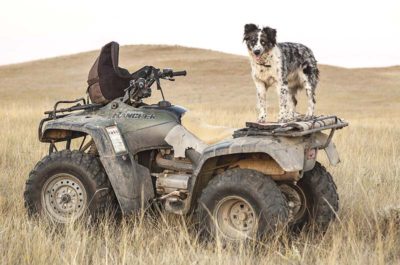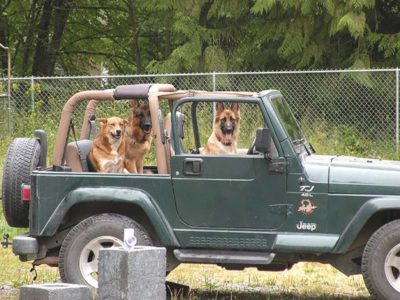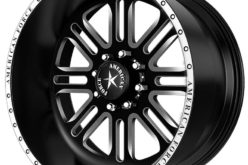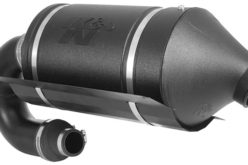Never Leave the Dog Behind – Off-Roading with Man’s Best Friend
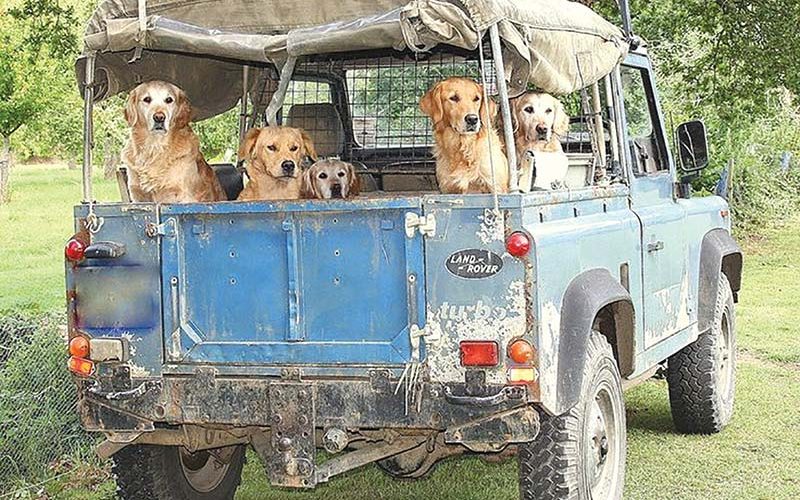

If you’re an off-road enthusiast, you know the basics of safe trail-riding: respect your ride, respect the environment, and respect others. But just as you need to know the limits of what your rig can handle, it’s also important to respect the limits of your passengers—including the four-legged kind.
As people continue to view their pets as more a part of the family and less a part of the furnishings, cultural norms shift. “Man’s best friend has perhaps never been more popular than right now,” writes The Engine Block in an article about camping with pets. “Public (and private) spaces like hotels, restaurants, and retail shops are noticeably more dog-friendly these days, with special accommodations and complimentary treats becoming the new norm.”
Consequently, the industry tasked with catering to these new consumer trends has shifted as well. Last clocked somewhere around $109 billion, the global pet industry understands the retail value in “pet humanization,” as insiders like to call it. And, while those innovative travel solutions, high-quality food stuffs, and enormous array of lifestyle accessories might scream novelty to some, to affectionate pet owners they ensure that not only can Fido come along for a R-I-D-E, but he can do so in a safe, comfortable, and stylish manner.
With about 65 percent of Canadian households currently owning at least one pet, and the country being home to some of the world’s most beautiful, rugged terrain, it’s only natural that this impulse to never leave the dog behind would extend to off-roading as well. Already ideal travel companions, thanks to a loyal, friendly, and judgment-free demeanour, dogs simply make outdoor adventuring more enjoyable. But that seemingly-boundless positivity has a limit like anything else, and it’s important to prioritize their needs in the face of new, intimidating experiences.
According to Packaged Facts, the Canadian pet industry is worth around $7 billion, including food, supplies, and services—signaling that, for every perceived pet-related obstacle on the trail, there is a cleverly designed, neatly packaged, and highly-marketable solution.
Here are a few kernels of advice (and unique products) to consider before you head out wheelin’ with your canine companion. And keep in mind that, just because the dog makes your experience more fun, this may not be the case for others on the trail.
“Before you assume anything, find out whether your dog is permitted where you want to go,” advises off-road accessories manufacturer Fab Fours. “One of the golden rules of off-roading is to never harm or disturb the natural environment. As innocent as they may seem, dogs can unintentionally do just that.”
Depressing but true, many national and provincial parks, off-roading trails, and OHV areas may have full or partial restrictions on dogs. If you’re unsure whether your furry friend would be welcome, check the destination’s website or call to ask a trail steward or park employee.
Additionally, resources like BringFido are incredibly useful if your off-road excursion involves any long-distance travel, as a team of online pet experts can help you find dog-friendly attractions, hotels, beaches, and more.
Most importantly, however, is to ensure your pet is healthy enough for the adventure. Heading off-road means heading into nature, where curious pets can sniff out all sorts of threats. Even if you have no intentions of stopping at a campsite or park, stay on top of vaccinations (especially rabies and distemper), as well as flea and tick treatments.
You wouldn’t hit the trails without some quality recovery gear (and likely a few other well-tailored mods), so it stands to reason you’ll need to pack some appropriately dog-minded essentials as well. First and foremost is plenty of fresh, cool water and a substantial supply of food or treats. Australia-based company, DOOG, offers a neoprene water bowl that wraps around a 600-ml bottle, keeping water insulated and cool while also providing an easy-to-stow portable bowl. And U.S. pet accessory company Kurgo provides a tough, waterproof Kibble Carrier bag with a bottom pocket that stores a collapsible silicone food bowl. Additionally, brands like Dexas Popware, KONG, and Lixit offer portable food and water containers engineered specifically with dogs in mind.
If you plan on doing any camping, a stake and leash is a worthwhile addition—check out the twist-and-lock IntelliLeash Intelli-Stayk or Boss Pet’s solid, forged-steel version. If your destination has a watering hole, a good moisture-wicking towel may just save your vehicle’s interior, as will some quality mess-resistant floor mats or cargo liners, like those from Husky Liners or WeatherTech. If plenty of swimming is on the agenda—or you plan on fording some deep water on the trail—a doggie life jacket is an extremely affordable and valuable investment. A brand like FLOWT can outfit the whole family without breaking the bank.
When it comes time to settle down for the night, a pet bed or soft blanket will keep your pup comfortable. (It can also help buffer the jarring side-to-side motion during off-road rides.) Biodegradable waste bags are always a smart investment, and something you will never regret bringing along, as are a couple of tennis balls or chew toys.
But above all, a K9 first aid kit is a must-have. The American Kennel Club explains that, “Many items are common everyday supplies you already have in the house,” like gauze and hydrogen peroxide. So, it shouldn’t be too hard for you to build up your existing emergency kit with some dog-specific additions. You can also purchase complete sets—Adventure Medical Kits makes one small enough to tuck into a backpack.
While it may be tempting to let ol’ Rover hang his head out the window or even run alongside your rig during trail-outings, a good harness is the recommended approach for maximum safety. Finding the proper method for securing your pup may take some trial and error, as it will largely depend on what vehicle you’re running, as well as any modifications you’ve made to it, plus local and provincial laws, the difficulty of the trail, and most of all—your dog’s temperament.
Here are some solutions other enthusiasts have found helpful:
- Comprehensive vehicle-restraint harnesses. Brands like Kurgo, Ruffwear, and EzyDog offer crash-tested dog car harnesses specifically designed for in-vehicle use. Designed with comfort and safety in mind, these options are compatible with vehicle seat belt systems and will provide maximum restraint during rides.
- Purpose-designed crates. Popular among hunting enthusiasts, sturdy aluminum dog boxes like those offered by Better Built or Owens provide a safe and fully-enclosed transport option. Keep in mind though, that while a metal construction is rough and rugged, it also absorbs heat, so these may be better suited for cool weather excursions.
- Backseat Barriers. If your dog responds poorly to being restrained or you only plan to tackle gentle trails, a safety barrier, swivel seat-belt tether, or backseat hammock from Kurgo, WeatherTech, or K&H might just do the trick. Giving your friend a little more room to roam, it will still keep him from becoming a projectile in the event of a collision or hard slam on the brakes.
Always remember that you’re toting around a passenger who lacks opposable thumbs. Even with a good harness, your dog is going to get bounced around. Be mindful of how you take turns and approach obstacles. If you’re planning something really hairy that could potentially topple your rig—either remove the dog and have your wheeling partner stay with them outside the vehicle, or save that trick for another day.
It’s completely possible that the first time you strap your pup into the passenger seat, you experience the kind of happy trail-riding experience worthy of a Purina commercial. It’s also completely possible that your dog will become scared or car sick, resulting in panting, whining, drooling, or something much more unpleasant. “The most important thing you can be when planning an activity or trip for your pup is realistic,” writes full-time van-lifer and Yakima brand ambassador, Brianna Madia. “Know your dog’s skill and comfort level and your own—and then plan to meet somewhere in the middle. And remember, familiarity reduces fear. Slowly introducing a new activity skyrockets your chances for long-term success.”
Consider how your dog does on regular car rides around town or long-distance highway travel. If he or she handles that well, step up to a bumpy country road and see how things go, gradually increasing the rugged terrain over time. Invest in some sturdy car seat covers and a large batch of wet wipes, as pet messes are a very real possibility. And above all, stay in tune to what your dog is telling you. Excessive whimpering, scratching, or cowering are all clear signs that it’s time to stop and try again another day.
Having a dog is a blessing, but it’s also a responsibility. If you want your loyal co-pilot’s off-roading days to be plentiful, be smart.
Additional Advice for Off-Roading Dog Lovers
- Big dogs need space. A full-size Lab is going to command more space than a Corgi—make sure you’re accommodating enough room. That might mean leaving other gear behind, or investing in a roof rack.
- Check the weather before you go. Even with breathable tube doors, that car is too hot for your pup on a real scorcher of a day. If it’s uncomfortably hot for you, it’s too hot for the dog.
- For obvious reasons, invest in a good reflective collar with an ID tag that has up-to-date contact info.
- If you’re doing any kind of ATV/UTV riding, invest in a set of Doggles. You’re wearing a helmet—the least you can do is keep flying debris out of your passenger’s eyes.




